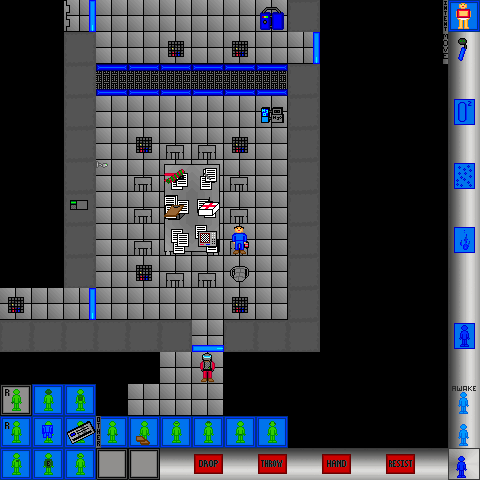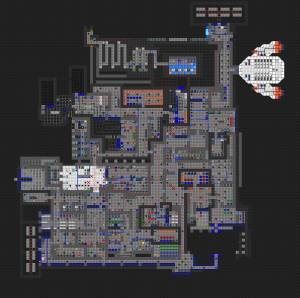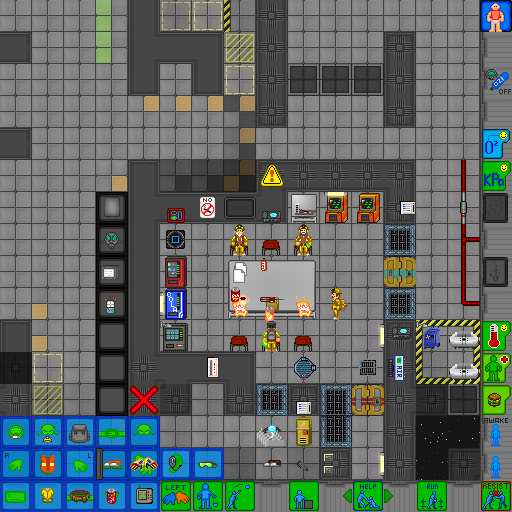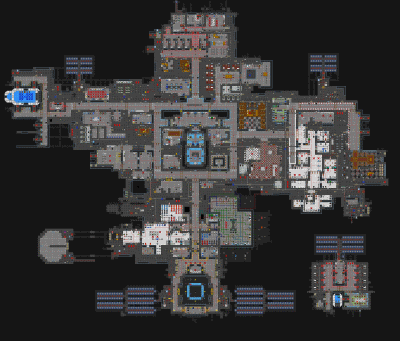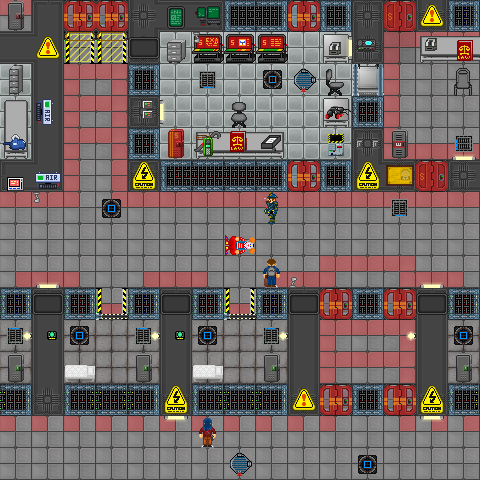The history of SS13
Note: This is an early version of this text. A lot of the early stuff is hazy and needs to be confirmed.
Here's a brief account of the history of Space Station 13. When the path branched, the path that leads to /tg/station is taken.
2003: The Original SS13
Space Station 13 started out as the creation of a person known by the alias Exadv1, but not much else is known about them, according to giantbomb.com. It's not like he's a member of the community here or anything like that... ... ...
Anyway, after its release in 2003, the first few years the game and game mechanics were kept in extreme secrecy. You could get banned for talking about game mechanics in OOC or through other non-IC means. The original map (image needed) for Space Station 13 was updated through the years. Generally the map that pre-dates power is referred to as Originalstation, and all maps after that are referred to as Oldstation. Rounds on Space Station 13 were similar to how they are now, eventually ending in the escape shuttle being called. Players numbers peaked at 10. Acquiring server files was difficult though, as you had to acquire them from one of the few people who had them. Never the less, SS13 servers started appearing on byond.com. The server files were sent as a compiled package (the .dmb and resource files only). It was also possible to acquire a version with defines, icon files and the map files. This version allowed you to edit the map, but you had to send the updated map file to someone with the original source, so they could compile it.
2006: The Fall of SS13
After about three years, the popularity (yes, 10 players on a server was considered a popular game) of Space Station 13 started to drop. The few people with the original source files started to lose interest. During a house visit, a 256MB flash drive probably saved the game from extinction. So yeah, the source was stolen by someone. This would happen again. It was however not released to the public. The person hosted their own server, only sharing the compiled code. Fortunately, a reverse-engineering tool existed for BYOND compiled servers, so someone reverse engineered it, to get something close-enough to the original source code. This code was spread around from person to person until someone had the bright idea to start a community called OpenSS13. This was the first open-source version of Space Station 13. Around the same time, the Something Awful Goons began to notice the game and several goon-hosted servers appeared.
2007-2009: The Resurrection of SS13
In the era from 2007 to 2009, Space Station 13 gained a lot of popularity with communities like Penny Arcade, Goonstation and OpenSS13 starting to grow. Player numbers reached unbelievable peaks of 18 players! The map everyone played was still Oldstation. Each codebase had its own version though. OpenSS13 used the OpenSS13 Oldstation map, while goons used the Goon Oldstation map, the latter of which is now the Derelict. It was during this time, that the Goonstation community revised the original SS13 backstory, and produced what is now generally accepted as the proper backstory.
In 2009, as Space Station 13 servers were getting up to 25 players at peak time, Goonstation coders and mappers made the biggest advance in years. They created a new, much larger station: Donut Station. As Goonstation was closed source, no other community could use the map, so they stuck with the OpenSS13 version. popularity of SS13 steadily increased through 2009, eventually leading to the requirement of yet another map design in 2010, dubbed Uterus station. The release was accompanied by a rewrite of much of the old Space Station 13 code, much of which was still tainted by fallout from the reverse engineering from years before that. In April 2010, as player numbers on servers were hitting 50, Goonstation decided to release their source as the now infamous Goonstation r4407. This is still the latest version of the Goonstation code which you can get.
2010: This is Where /tg/ Came in
After the release of r4407, the flood gates for new servers were open. 4chan spawned /tg/station, Bay12games spawned Baystation, both of which with their own set of coders, spriters and code, based on r4407 of Goon code. The three stations slowly gained player numbers. Goonstation with two servers, /tg/station and Baystation with one server. Each station with their own policies and expectations for players, covering the full spectrum of roleplay.
As player numbers continued to grow, additional communities sprung up: NoX Station, Facepunch, YogStation, /vg/station and others.
2014: The NT/TG-Split
Around Easter 2014, tensions between players and coders came to a head and the forum owner kicked out coderbus from the forums, spawning several large discussion threads. A new /tg/station fork was made, called NTstation. This branch initially had free commit access to everyone, but this was soon abandoned. The main characteristic of this new fork was that all changes needed to win a majority vote on the forums before they would be merged, with less regard for code quality. Many new features were quickly coded and added.
Tensions between the two forks decreased and not much later they were on good terms again. A new website was made which both forks use, and features have been ported between the forks, eventually leading to the merging of both codebases back into one /tg/station.
2015: The Continuing
With player numbers peaking at 80 players per server, the stations are now huge and the game is changed from what it was back in 2003, even to the point of gaining recognition by online magazines.
So here's to SS13 and all the players, admins and developers who made it happen!
